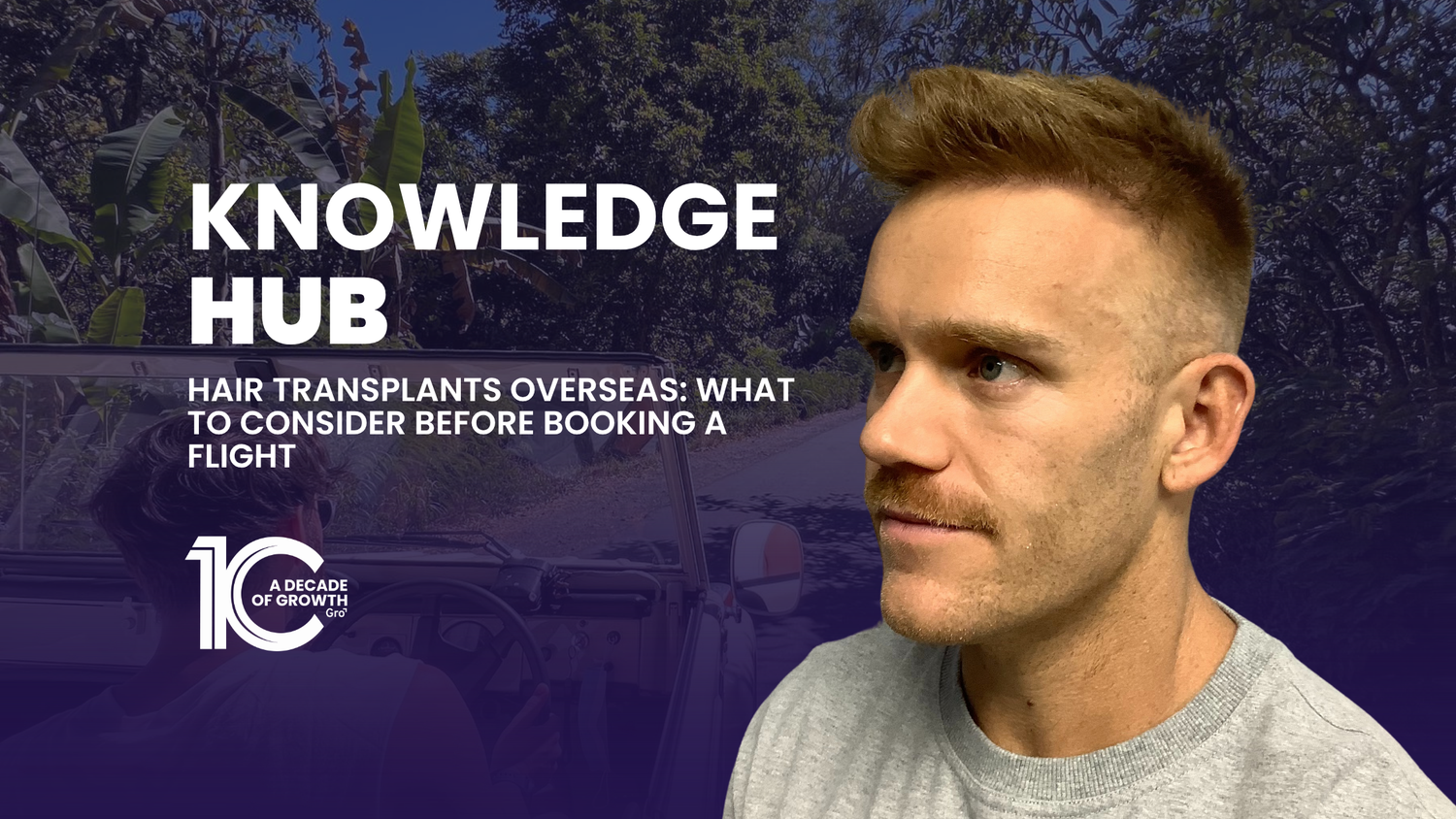Considering a hair transplant overseas, such as in Thailand, might seem appealing. The idea of combining a tropical holiday with a lower-cost procedure sounds ideal—but there are important risks that should not be overlooked.
While affordability may play a role, it's important to consider medical oversight, hygiene standards, and post-procedure care. Here's what to know before making an informed decision about hair restoration abroad.
Potential Risks of Hair Transplants in Thailand
1. Inconsistent Medical Oversight
Some overseas clinics may rely on teams of technicians rather than a consistent medical professional throughout the procedure. This can affect the placement of hair follicles and the overall aesthetic result.
2. Variation in Technique
Different clinics may use more aggressive extraction techniques, which can increase the risk of trauma to the donor area. This may impact your ability to undergo future procedures.
3. Unknown Graft Survival Rates
Follicle survival rates can vary between providers. Without clear clinical data or post-procedure follow-up, it may be difficult to know how effective the procedure will be in your case.
4. Limited Follow-Up Care
Aftercare plays a role in healing and monitoring outcomes. If your provider does not offer structured follow-up once you're back home, you may need to manage the recovery process without medical support.
5. Travel Insurance Limitations
Many travel insurance policies exclude elective or cosmetic procedures performed overseas. In the event of complications, medical expenses may not be covered.
Medical Oversight and Hygiene Standards
Hair transplant procedures involve minor incisions and should be performed under regulated clinical conditions. In Australia and New Zealand, clinics must comply with local healthcare regulations that include infection control and the involvement of registered practitioners.
At Gro Clinics, procedures are doctor-led and performed in line with relevant health regulations. Clients also receive structured follow-up care over 18 months, which can support better long-term outcomes.
Checklist: Questions to Ask Any Hair Transplant Provider
- Who performs the procedure? Is a registered health practitioner involved?
- What technique is used for extraction and implantation?
- Is there a risk of visible scarring?
- Are follicle survival rates supported by published clinical data?
- What is the plan if a complication occurs post-procedure?
- Is follow-up care offered once you're home?
- How is communication managed across locations?
The Gro Approach
Gro Clinics uses a doctor-led, clinically supervised method focused on medical oversight, precision, and patient support. Our reGro® method is a refined approach to FUE that uses minimally invasive tools to help protect donor follicles during the procedure.
- Micro-precision tools used for graft implantation
- No scalpels or stitches required
- Your own hair is used to support natural-looking coverage
- Includes structured follow-up over 18 months
Learn more about our hair transplant process or book a consultation with an advisor to explore your options.
Clinic Locations
Book a consultation or call 1300 787 563 to learn more.
Disclaimer: This content is for informational and educational purposes only. It does not constitute medical advice. Always consult a registered health practitioner for advice tailored to your personal circumstances. Results vary between individuals. No guarantees or expected outcomes are implied.











